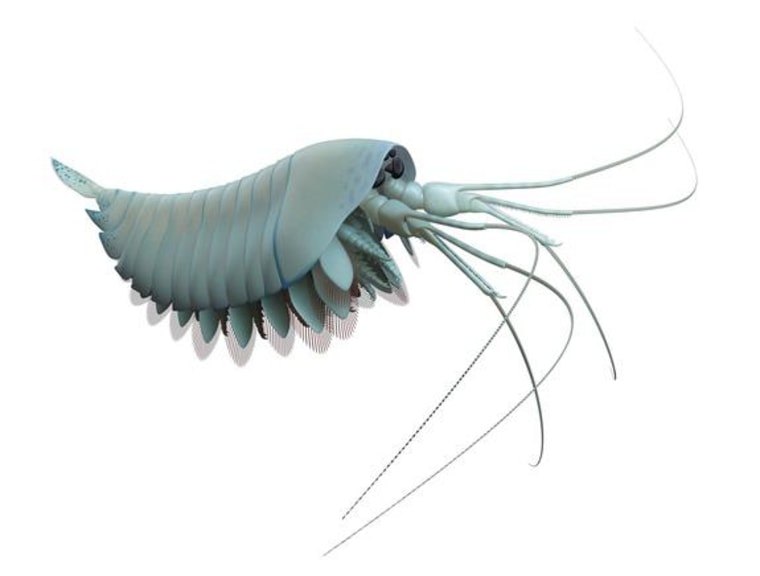A newly discovered Cambrian predator with a wicked set of arms under its four-eyed face reveals that early arthropods were experimentalists when it came to using their limbs.
The marine creature, now called Yawunik kootenayi, lived 508 million years ago during the Cambrian Period, when the major animal groups and complex ecosystems first appeared in the fossil record. Its body measured about 6 inches, or 15 centimeters, long.

It is the first new species reported from a stunning fossil find in Marble Canyon in British Columbia's Kootenay National Park. Yawunik is one of the most abundant species at the Marble Canyon site, and so, as a predator, likely held a key position in the food chain, said lead study author Cédric Aria, a graduate student in paleontology at the University of Toronto in Canada.
"We actually found it on the second day [in 2012]," Aria said. "It was one of the first really amazing discoveries."
The animal was named Yawunik kootenayi after the Ktunaxa people who have long inhabited the Kootenay area where the Marble Canyon locality was found. Yawu'nik is a central figure in the Ktunaxa creation story.
The new species was described on Friday in the journal Palaeontology.
Yawunik belongs to a group of animals called the leanchoiliid arthropods. Arthropods are now one of the most diverse and successful phylums on Earth, making up about 80 percent of Earth's species. The family tree includes scorpions, spiders, butterflies, ants, lobsters, shrimp and horseshoe crabs.
Yawunik's closest modern relatives may be the chelicerates, a group that includes spiders, horseshoe crabs and scorpions.
— Becky Oskin, Live Science
This is a condensed version of an article that appeared on Live Science. Read the entire story here. Follow Becky Oskin @beckyoskin. Follow Live Science @livescience, Facebook & Google+.